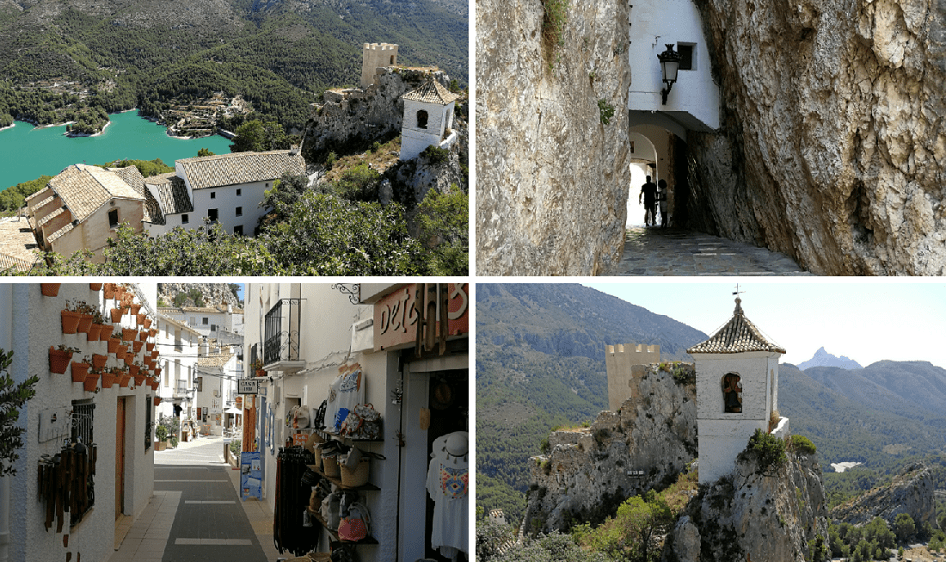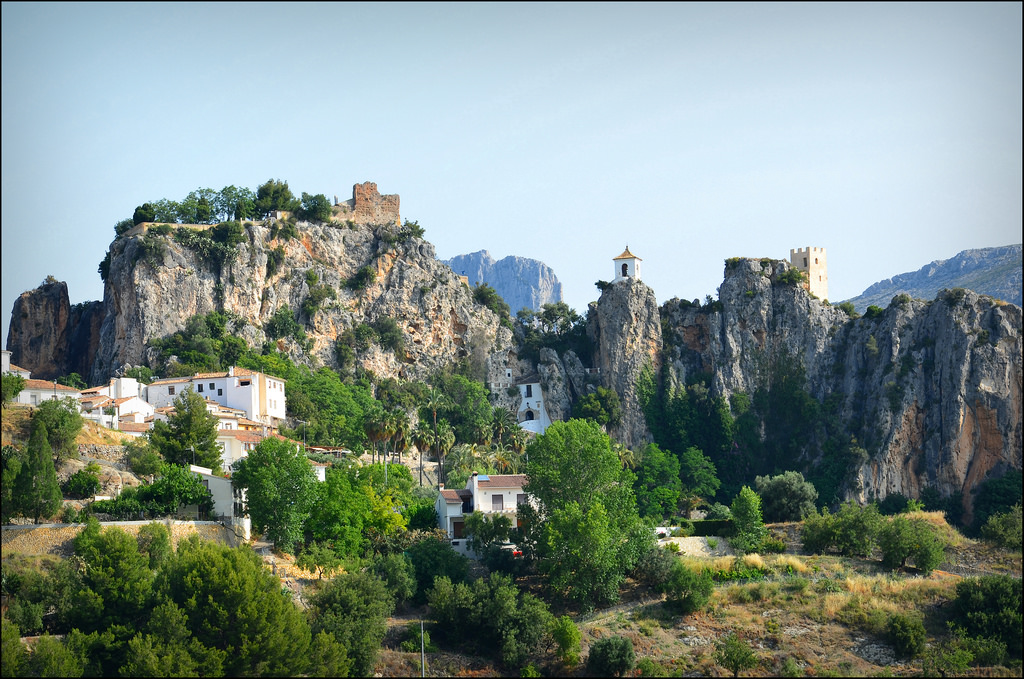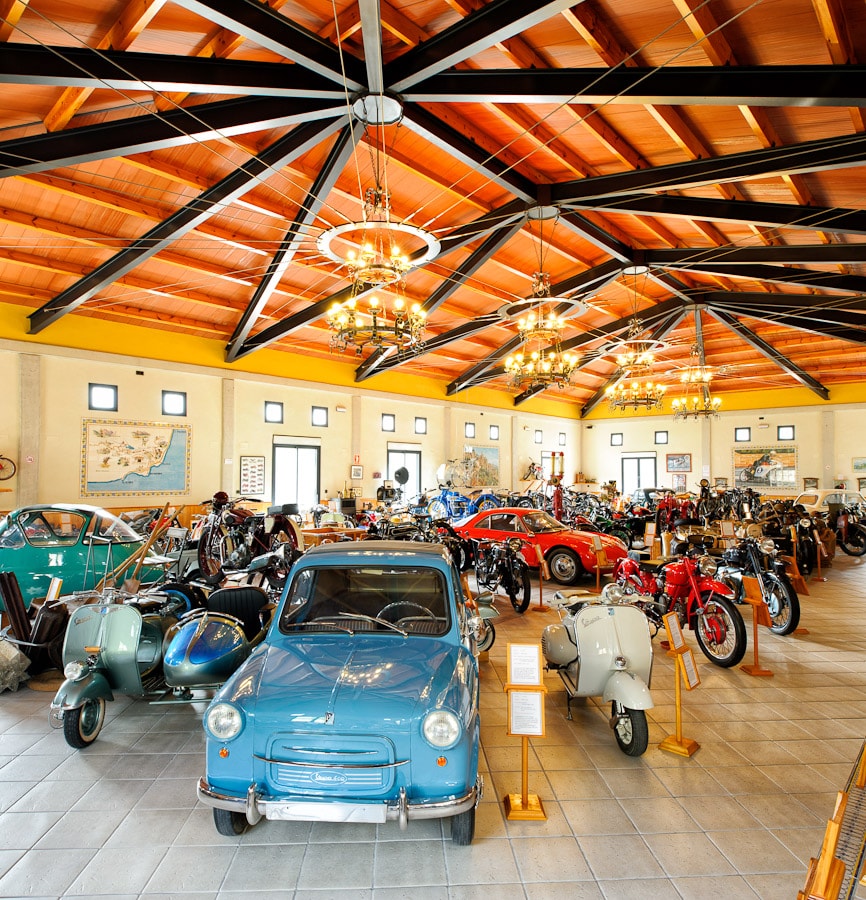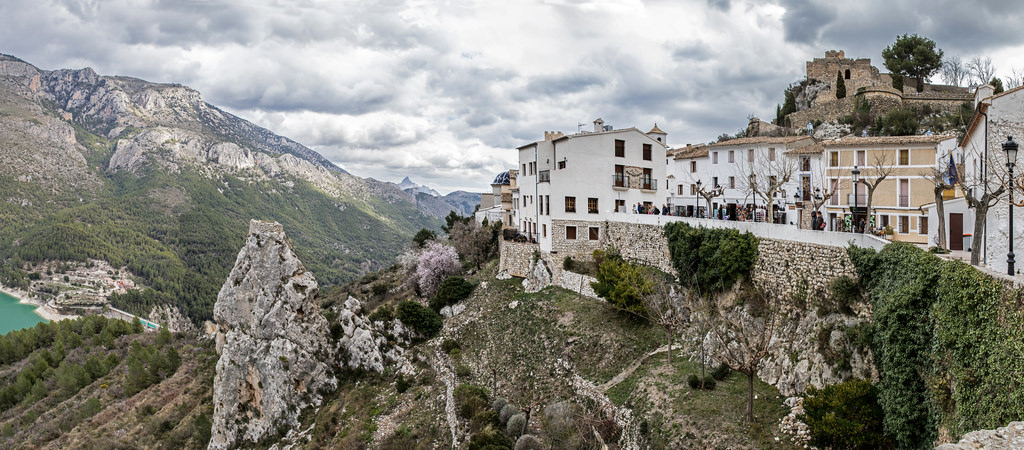Located in the Sierra de Aitana some 25km inland from the Costa Blanca resorts of Benidorm and Altea, although the road, winding up into the mountains, makes it seem far longer. Once upon a time, the place was only accessible on donkeys´ backs.
Guadalest is an attractive village with a historic castle (Castell) which dates from the Moorish occupation of Spain (8th to 13th centuries). It has recently been confirmed to be the most visited village in the whole of Spain.

The municipality enjoys a Mediterranean-type climate, but differs somewhat from the coast, with cooler winters and milder and more pleasant summers. Due to its rugged relief, pine and low mountainous areas extend into the highlands, while citrus, olive, carob and almond trees are cultivated on the sloping terraces and in the valley all adding to an extremely picturesque landscape.
One of the most popular tourist attractions to be found on the Costa Blanca, Guadalest welcomes coaches full of visitors every day throughout the year, coming from all parts of the Alicante region and beyond.
Accessed now, as it was when it was built, by way of a fifteen metre long tunnel, called the “Portal de San Jose”, the upper village and castle would have been easy to defend, as this is the only access point, with steep cliffs all around, and house perched precariously on the edges of the mountainside.

Due to its well protected position, the Moors held out in Guadalest, long after the rest of the region had fell to the Christian reconquest, and it was not until 1609, that they well finally driven out from this place.
The Castell was finally abandoned to the elements, after a huge explosion in 1848, though there are still significant sections remaining, which you can visit, and get an amazing view of the area, and even see the coast in the distance.
The winding lanes which you must take to reach the top of Guadalest, are lined with charming little shops, full of local crafts, produce and gift items. There is something for just about everyone. Shops, cafes, views, walking, and lots of little quirky museums, such as the salt and pepper pot museum, there is one which features cribs, dolls houses and antique toys as well as the museum of cats with hundreds of pottery and porcelain figures for visitors to admire.
You enter the upper areas (as the Moors did 1,300 years ago) through the “Portal de San Jose”.
To visit the Castell you must enter the restored house of the Orduña family (now an interesting museum), otherwise, you can carry on to the village square at the top, where you will get spectacular views of the surrounding mountains and also look down to the turquoise coloured Embalse de Guadalest – stunning.
Back in the village itself Guadalest offers many small shops which sell artefacts and decorative items as well as handmade clothing. There is also a good selection of cafes and bars.

Nearby villages include Benifato, Abdet, Chines Confrides and Benimantell and for classic car and bike enthusiasts there is also a vehicle museum on the CV755 just 7km below Guadalest which is well worth calling into. The collection consists of about 140 motorcycles and several microcars, all in perfect condition and totally original, from the 20s to the 70s. A very pleasant café and bar is situated close by.
If you wish to visit the village from the Torrevieja and Orihuela Costa areas there are regular coach trips arranged by many of the local tour operators costing about 15-20 euros a head. Alternatively, travelling by car the journey will take you about an hour and a half although the driver will miss much of the beauty as the road winds up into the mountains.





